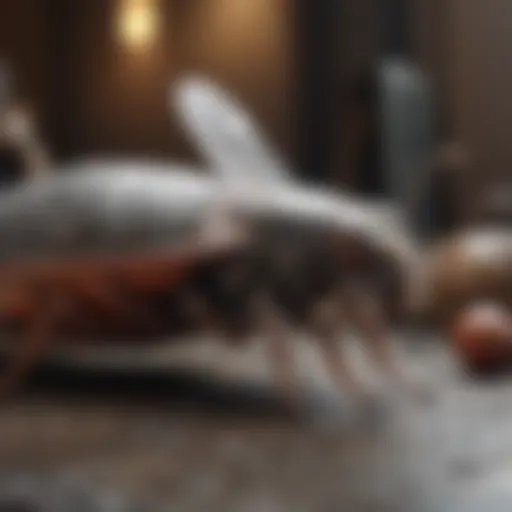Canvas Fabric and Spray Paint: A Creative Exploration
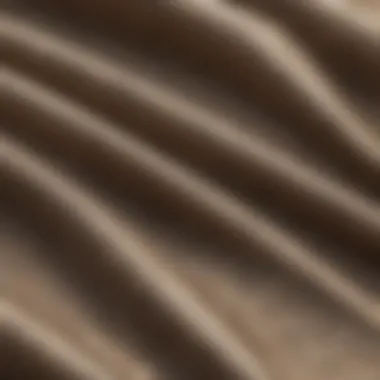

Intro
Understanding the marriage of canvas fabric and spray paint is akin to exploring the depths of a lush forest: there are many paths to take, each offering unique experiences and lessons. Canvas, a robust cotton or linen fabric, has been a favorite among artists and DIY enthusiasts for decades. Its versatility makes it a cornerstone in the realms of art, home improvement, and craft projects. Its texture provides an excellent base for various paint applications, especially the vibrant bursts of color that spray paint can bring.
Spray paint, with its quick-drying properties and broad range of colors, becomes a tool of creativity. This pairing not only allows homeowners to make custom decor but also empowers them to engage in personal expressions that are both aesthetic and functional. The importance of this combination stretches beyond mere visual appeal; it offers an opportunity for individuals to transform spaces, engage their creativity, and ultimately, take control of their environment.
In the following sections, we will unpack the nuances of canvas fabric and spray paint, shedding light on practical insights aimed primarily at homeowners and housewives. Whether you’re looking to revitalize old furniture or create stunning wall art, there is much to gain from understanding these materials better.
Understanding Canvas Fabric
Canvas fabric serves a cornerstone in the realm of art and DIY projects, offering both artists and hobbyists a reliable foundation to express their creativity. Its qualities make it a popular choice for various applications, from fine art paintings to practical home decor. This section aims to unveil the significance of canvas in relation to the use of spray paint, highlighting essential aspects that every creator should consider when they embark on their artistic journeys.
Definition and History of Canvas
Canvas is traditionally made from hemp or flax, though modern iterations frequently utilize cotton or synthetics. This sturdy, durable textile has roots tracing back to ancient civilizations where it was primarily used for sails, tents, and other necessary materials. The shift towards artistic applications gained momentum in the Renaissance when canvas became the go-to medium for painters, replacing wooden panels that were heavier and less portable. Its ability to handle various mediums effectively makes it invaluable in the art world, particularly in conjunction with spray paints, which have gained popularity for their versatility and ease of use.
Types of Canvas
Cotton Canvas
Cotton canvas is a favorite among artists and crafters for several reasons. One significant aspect is its affordability compared to other types of canvas. It offers a modest weight, making it easy to stretch over frames while maintaining durability. Moreover, its natural fibers absorb paint wonderfully, resulting in rich color depth. It does have its downsides, though; cotton can be prone to wear and tear if exposed to harsh conditions. Nevertheless, its widespread use underscores its status as a reliable option for both fine art and DIY projects.
Linen Canvas
Linen canvas stands out due to its refined texture and longevity. Made from flax fibers, it offers a robust structure that actually improves with age, making it a top choice for professional artists looking for a long-lasting medium. Its appearance is more refined than cotton, providing an elegant finish that can elevate any artwork. However, the cost of linen can be prohibitive, which might limit its appeal to hobbyists or those on a tight budget. In the end, its benefits can trump the high price for many art enthusiasts.
Synthetic Variants
Synthetic canvas variants, such as polyester blends, are newer arrivals on the scene. Their primary characteristic is resistance to moisture and mildew, which makes them suitable for both indoor and outdoor applications. This durability coupled with lightness can make spray painting more efficient, especially for large projects. While they may lack some of the organic texture and charm found in cotton or linen, their ease of maintenance and longevity are attractive advantages for DIY enthusiasts. However, some artists find that the synthetic surface does not absorb paint as well, leading to potentially less vibrant results.
Properties and Benefits
Durability
Durability is often the first quality that springs to mind when considering canvas. The fabric is typically strong and resistant to wear and tear, a characteristic that is particularly beneficial for works that are meant to last. Knowing a piece will stand the test of time encourages artists to dive into their projects without reservations. Yet, even durable canvas can be affected by extreme environmental conditions, requiring care during use and display.
Texture
Texture plays a significant role in the finished aesthetic of a canvas piece. The raw, tactile quality of canvas creates a unique foundation for spray paint applications, allowing for a variety of artistic expressions. The more textured surface helps the paint grip better, which results in interesting depth and dimension. A smoother texture can offer different effects but may require a different preparation process. Finding a balance between texture and finish is an essential factor to keep in mind when selecting canvas.
Versatility
The versatility of canvas cannot be understated. It accommodates various art forms while serving practical purposes around the home. From abstract spray art to traditional painting, the options are virtually limitless. This flexibility makes it favorable not just for artists, but for DIY enthusiasts looking to amplify their home decor. However, it is important to remember that different types of canvas and paint may yield varying results, so sampling materials beforehand is wise.
"Picking the right canvas is like choosing the right stage for a performance; it can make or break the overall impact of the art."
Understanding canvas fabric provides foundational knowledge beneficial to both new and seasoned creators as they delve into the dynamic world of spray paint applications.
Exploring Spray Paint
Spray paint is not just a quick way to cover a surface; it’s a medium with the power to transform the ordinary into the extraordinary. Understanding spray paint—its constituents, various types, and versatile applications—can be the cornerstone of any creative endeavor, whether you’re a seasoned artist or a weekend DIY enthusiast. In this segment, we will dive into the chemical makeup of spray paint, explore the different kinds available, and discuss how it can be optimally utilized in a range of projects.
Chemical Composition
Binders
Binders in spray paint are crucial because they hold the pigment together and ensure that it adheres well to the surface being painted. Often made from acrylics or resins, binders create an elastic film that helps resist chipping and cracking. They are popular for their excellent durability and for providing a vibrant finish. A unique feature is how the binder can influence the glossiness of the final product; some binders dry to a matte finish, while others shine. The downside? Sometimes, they might take longer to cure, affecting how quickly one can handle the painted item.
Pigments
Pigments work like sprinkles on a cake—they add color and vibrancy. The choice of pigment has a significant impact on the opacity and brightness of the final result. High-quality pigments will resist fading when exposed to UV light, an essential factor for outdoor projects. One characteristic that makes pigments especially appealing is their wide range of colors and finishes. However, it's important to be aware that not all pigments are lightfast, meaning that some may discolor over time. This could influence how long your artwork maintains its original beauty.
Solvents
Solvents are the unsung heroes of spray paint. They help dissolve the binder and pigment, enabling a fine mist to be sprayed evenly. A key characteristic of solvents is their evaporation rate; fast evaporating solvents can facilitate a quick-drying process, which is often desirable. While using water-based solvents reduces harmful emissions, oil-based solvents tend to provide a stronger, more durable finish. On the downside, oil-based products can carry noxious fumes, making proper ventilation a must.
Types of Spray Paint
Acrylic Sprays
Acrylic sprays are an artist's ally owing to their quick-drying properties and adaptability across various surfaces, including canvas. Their versatility makes them suitable for everything from art projects to furniture touch-ups. What sets acrylic sprays apart is their water-soluble nature, offering easy rinsing and clean-up. However, artists must be cognizant that while they dry quickly, they might not bond as strongly to porous surfaces, requiring a good primer as a base for optimal adherence.
Oil-Based Sprays
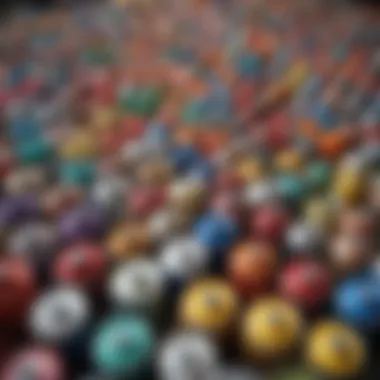

If durability is king, then oil-based sprays reign supreme. Known for their strong adhesion and fade-resistance, these sprays boast a rich, glossy finish that stands out. The distinctive quality of oil-based sprays is their ability to coat surfaces with less effort, making them ideal for intricate applications. However, they do come with drawbacks; the harsh solvents and longer drying times may deter some users, especially in enclosed spaces without proper airflow.
Water-Based Sprays
Water-based sprays are gaining traction, especially for eco-friendly projects. Their unique selling point lies in their low toxicity and ease of clean-up, making them appealing for home artists and DIY projects alike. They can be mixed easily with other water-based mediums, allowing for an extensive palette. A downside is that they often require multiple coats to achieve the same opacity as their oil-based counterparts, which could extend project time.
Applications and Usage
Artistic Expression
Spray paint is an artist's tool of liberation. Whether creating a mural or customizing a canvas piece, the ability to layer colors and create gradients offers endless creative potential. Artists appreciate the rapid application and the ability to cover large areas effectively. Nevertheless, this medium commands a respectful approach; understanding spray techniques can be the difference between a masterpiece and a muddied disaster.
DIY Home Projects
Homeowners are discovering the magic of spray paint for various projects, from upcycling old furniture to refreshing room decor. The ease of application and wide range of colors make it a favorite for those looking to personalize their space affordably. On the flip side, a lack of proper preparation can lead to unsatisfactory results, such as sticky surfaces or uneven finishes.
Industrial Use
In industrial applications, spray paint showcases its ability to provide protective coatings on machinery and equipment prone to wear and tear. High-performance sprays designed for heavy-duty uses can resist chemicals and extreme weather conditions. This aspect makes it invaluable in sectors like construction and manufacturing. Yet, precision is paramount; improper application can lead to costly mistakes or even safety hazards.
Techniques for Painting on Canvas
Painting on canvas is a nuanced venture that showcases creativity and craftsmanship. It’s not just about slapping paint on a surface; the techniques involved can significantly affect the outcome of any artistic project. Knowing the various methods and considerations when painting on canvas ensures that the final artwork not only looks good but lasts longer. By understanding the right techniques, one can maximize the canvas's intrinsic qualities and the spray paint's flexibility.
Preparing the Canvas
Before diving into the painting process, prepping the canvas is crucial. A well-prepared canvas sets the stage for the paint to adhere effectively and enhances the overall quality of the artwork.
Priming Methods
Priming a canvas serves several key purposes. It creates a suitable texture for the paint to adhere to, which enhances the vibrancy of colors. The most common primers used are acrylic gesso, which is versatile, and oil-based priming mediums, dependent on the type of paint being used. Using a primer can prevent the paint from absorbing too much into the fabric, which can lead to a lack of color depth.
A key characteristic of using a primer is its ability to create a barrier between the paint and canvas. This is particularly important when using spray paints, as they can react differently based on what surface they interact with.
Some unique features of different priming methods include:
- Acrylic Gesso: Dries fast and is easy to work with, making it a popular choice.
- Oil-Based Primer: Offers a rich texture but takes longer to dry, which may not suit all artists.
Nevertheless, it’s important to be mindful of the primer's adhesion properties and drying time, as poorly chosen or applied primers can lead to uneven paint absorption.
Choosing the Right Canvas
The choice of canvas also plays a vital role in the painting process. Several types of canvas are available, including cotton, linen, and synthetic options. Each has its pros and cons, influencing how the paint sits on the surface.
A key characteristic of a canvas is its weight, typically measured in ounces. Heavier canvas can be more durable and suitable for larger projects, while lighter canvas works well for detailed work.
When selecting a canvas:
- Cotton Canvas is generally the most affordable and widely used, ideal for beginners and casual artists.
- Linen Canvas tends to be more expensive but offers better texture and longevity, favored by professionals.
- Synthetic Variants can give a modern feel and are often designed to repel water.
Each option presents unique features that can enhance or inhibit various forms of spray paint application.
Spray Painting Techniques
Once the canvas is properly prepared, understanding distinct spray painting techniques is essential for achieving desired effects.
Layering and Blending
Layering and blending are fundamental techniques that allow an artist to build depth and complexity in their work. This method involves applying multiple thin layers of paint, allowing each layer to dry before adding another. By blending colors together, artists can create stunning gradients and transitions.
A beneficial impact of this technique is the ability to achieve subtle color shifts without muddying the hues. For instance, different spraying angles can result in varying shapes and shades.
One drawback of layering and blending is that it requires patience and a steady hand. Rushing the process can lead to uneven outcomes, which might necessitate a touch-up at a later stage, potentially complicating the work.
Stenciling
Stenciling allows artists to apply intricate designs and patterns onto their canvases, providing a structured approach to art creation. This technique involves using cut-out templates to create sharp shapes and lines. It’s especially popular for geometric designs or lettering.
A significant characteristic of stenciling is its ability to maintain precision while offering an opportunity to experiment with multiple colors within a single design. This makes it a popular choice among DIY enthusiasts because anyone can create stunning visuals without needing advanced skills.
However, the downside of stenciling is the risk of paint bleeding under the stencil's edges, particularly with runnier paints. Careful application of spray paint and pressure is necessary to avoid this common pitfall.
Creating Texture
Creating texture lets artists add a three-dimensional quality to their work, drawing in viewers and inviting them to explore the piece. This can be accomplished through various methods, such as splattering, dripping, or using sponges to apply paint.
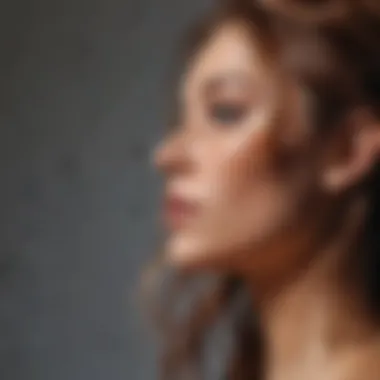

A unique feature of texture creation is its ability to evoke emotional responses and add layers of meaning to artwork. Texture can transform a flat canvas into a dynamic point of interest.
However, achieving the right texture requires a good understanding of paint types and how they interact. The challenge often lies in balancing texture with color and form, ensuring neither overshadows the other in the completed piece.
Finishing Touches
After the artwork is complete, giving it the necessary finishing touches is crucial in preserving integrity and appearance.
Sealing and Protecting the Artwork
Sealing the artwork with a protective finish ensures longevity and preserves the vibrancy of colors. Some artists opt for spray sealants, while others prefer brush-on finishes. This protective layer guards against dust, UV rays, and moisture.
The key characteristic of sealing is its role in maintaining the original look of the artwork. A good quality sealer can enhance the color's richness, making sealed pieces pop.
However, using the wrong type of sealer may alter the texture or appearance of the paint. This requires careful selection based on the type of paint and the desired finish effect.
Displaying Finished Pieces
Properly displaying artwork plays a critical role in its impact. Choosing the right frame, lighting, and placement can elevate a piece from ordinary to extraordinary.
A significant characteristic of displaying art is how it engages viewers. Well-lit and thoughtfully arranged pieces draw people in and encourage appreciation of the work.
Conversely, displaying artwork incorrectly may obscure its details and distract from its overall message. It's worth taking time to think about the tonality of the display environment as it can affect how colors are perceived.
Challenges and Solutions
Tackling challenges is a rite of passage in art and DIY projects. When working with canvas and spray paint, issues can arise that might make you want to throw in the towel. But, knowing how to face these challenges head-on can make all the difference, improving both your skills and the quality of your work. Addressing common problems not only boosts your confidence but also enhances your ability to create remarkable pieces.
Common issues, like dripping and uneven coverage, if not understood and managed, can derail even the most passionate artist's plans. Let’s dive into some of these challenges, understand their roots, and explore effective solutions.
Common Issues in Spray Painting
Dripping and Running
Dripping and running are issues that crop up often when using spray paints. They occur when the paint isn’t applied evenly, leading to paint pooling or flowing down the canvas. This problem can arise from multiple factors such as holding the can too close to the surface or applying too much paint in one go.
Dripping can quickly turn your masterpiece into an unsightly mess, overshadowing even the best of ideas. The key characteristic of this problem is its ability to ruin fine details that you may have taken time to craft. While some artists might think that a bit of flick and flair can salvage a drip, it's mostly a sign of a lack of control.
One real advantage of understanding this issue is that it can teach you to appreciate the value of technique. Learning the right distance to hold your spray can is crucial. Plus, understanding when to ease up on the pressure allows you to avoid an array of unsightly drips. This article greatly emphasizes the importance of mastering this aspect for achieving cleaner finishes in spray painting.
Uneven Coverage
Uneven coverage is another common hurdle. This occurs when paint does not apply uniformly; it could be lighter in some areas and heavier in others. That inconsistency can take away from the intended effect of your artwork. When you use different techniques or cantanko with the pressure in your spray can, this often leads to patchy results.
The key characteristic of uneven coverage often lies in pouring on too little or too much paint at a given time. Think about when you're trying to fill a cup with water; if you pour too fast, it spills everywhere. The same principle applies here; it requires some finesse.
This can be particularly troubling, as it can blight your overall artistic goal. However, recognizing this issue can also be beneficial. It lays the groundwork for developing an eye for quality and uniformity in your work. Moreover, it serves as a lesson in being patient and careful with your approach, fostering a methodology that you will carry into more complex projects.
Troubleshooting Techniques
To combat the challenges of spray painting, you can adopt several troubleshooting techniques that not only make your artwork shine but also provide you with insights into the science of spraying paint effectively.
Adjusting Spray Distance
One key technique is adjusting spray distance. This refers to how far away you hold your spray can from the canvas as you work. This simple adjustment can significantly influence the final outcome. If you're too close, the paint can concentrate at one spot, leading to drips and an unmanageable mess.
Conversely, if you hold the can too far away, you might end up with a thin and uneven coat. The sweet spot is generally around six to twelve inches, but it can vary based on the type of spray paint and surface you’re working with. This not only allows for better control but also promotes a smooth and even application, enhancing the overall quality.
Emphasizing this technique can dramatically improve the quality of your artworks and DIY endeavors. It gives you a firm grip on how to manipulate the medium while allowing room for creativity.
Using the Right Nozzle
Another vital aspect is using the right nozzle. Different nozzles are designed for various effects; some offer a wide spray for broader coverage, while others are intended for detail work. This choice can make or break your project. If you're trying to execute fine details, using a nozzle designed for broad coverage will lead to frustratingly messy results.
The unique feature of using the right nozzle lies in having more control over your application process. Choosing wisely makes your task less daunting and opens the door to efficiency. It's always a sound practice to familiarize yourself with the nozzles that your spray paints offer, as this small detail can save you a lot of hassle down the line. Plus, you'll find that using the correct nozzle enhances your overall technique in spray painting, allowing your artistic vision to flourish.
"A well-prepared canvas and the right tools pave the way for successful spray painting, ensuring that challenges become stepping stones instead of roadblocks.”
In summary, by identifying common issues, and adopting effective troubleshooting techniques, you not only overcome the hurdles associated with canvas and spray paint but also elevate your capabilities as an artist or DIY enthusiast. Each problem holds valuable lessons, and embracing these challenges helps you on your journey to creating impressive, lasting art.
Best Practices for Canvas and Spray Paint Use
When it comes to working with canvas and spray paint, implementing best practices is not just a recommendation; it's a necessity. These practices can make the difference between a project that is simply passable and one that truly shines. Understanding the nuances of material choices, safety, and techniques is vital for both seasoned artists and enthusiastic DIYers alike.
Safety Precautions
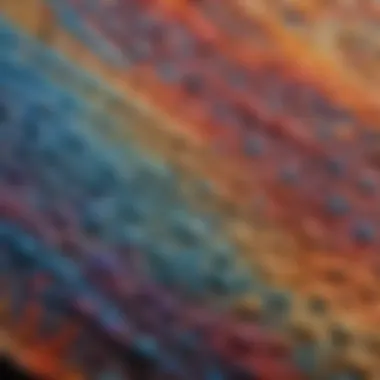

Wear Protective Gear
One cannot stress enough the importance of wearing protective gear when spray painting. This includes items like masks, gloves, and goggles. The chemicals in spray paint can be quite harsh and exposure can lead to respiratory issues or skin irritation. Key characteristic of wearing protective gear is that it acts as a barrier against harmful substances.
- Masks filter out particulates and fumes, contributing to a healthier working environment. They are a popular choice among artists, as they allow for creativity without the worry of inhaling toxic particles.
- Goggles protect the eyes from both paint splatters and chemical fumes, ensuring a clear line of sight and safety.
While the unique feature of protective gear is its ability to safeguard health, there are also downsides to consider. Some may find masks cumbersome or uncomfortable during prolonged use.
Ventilation Requirements
Proper ventilation is another cornerstone of safe spray painting. Ensuring that your workspace is well-ventilated helps mitigate the risks associated with inhaling fumes. Key characteristic here is airflow; it allows paint vapors to disperse, decreasing the chances of respiratory issues.
In unventilated spaces, harmful substances can accumulate, which could lead to dizziness or even more severe health issues. The unique feature of having natural air flow while painting is immense; fresh air keeps you alert and enhances your creative flow.
However, finding adequate ventilation can sometimes be a challenge, particularly in smaller or confined spaces. It's crucial to plan ahead and identify suitable locations or methods for maintaining airflow before you start painting.
Choosing Quality Materials
Identifying Reputable Brands
The quality of materials used in creating art can’t be ignored. Identifying reputable brands for your canvas and spray paint is essential for ensuring lasting results. A key characteristic of using reliable brands is their commitment to quality control, which often leads to superior outcomes in your projects.
- Familiar brands, like Rust-Oleum for spray paints and Winsor & Newton for canvases, are known for their durability and vibrant colors. Both artists and DIYers can appreciate the assurance that these brands provide, making them a popular choice.
The unique feature of choosing established brands is that they tend to come with a wealth of customer feedback and product reviews, which can guide your purchasing decisions. The downside? These well-respected brands sometimes come with a higher price tag, which raises the question of whether they are indeed worth it.
Cost-Effectiveness Versus Quality
When selecting materials, the tug of war between cost-effectiveness and quality cannot be overlooked. It’s understandable to be drawn to cheaper options, especially if you are on a budget. However, key characteristic of investing in quality materials is their longevity and ability to stand the test of time.
Better materials tend to yield better results, reducing the need for reapplication or touch-ups down the line. Think of it this way: settling for less often leads to wasted time, making it less cost-effective in the long run.
On the flip side, the unique feature of lower-priced products could be their accessibility, especially for beginners who might prefer not to dive deep into investment in high-end items. It's a balancing act; weigh your options, and consider your skills and intentions behind the artwork.
"Investing in your materials today could save you both time and money tomorrow."
Understanding these best practices when working with canvas and spray paint can set the stage for not just attractive projects but also harmonious and safe creative expression.
Future Trends in Canvas Art and Spray Techniques
Discussing the future trends in canvas art and spray techniques opens up an exciting realm of possibilities. As various influences shape the artistic landscape, it's essential to stay attuned to innovations that promise to transform how artists and DIY enthusiasts approach their work. From environmentally conscious products to the integration of technology, these trends are not just fads; they represent shifting paradigms in artistic expression and sustainability.
Innovation in Art Supplies
Eco-Friendly Alternatives
In recent years, there has been a marked shift towards eco-friendly alternatives in art supplies. This is more than just a trend; it’s a movement embracing sustainability. Artists are increasingly looking for paints and sprays that minimize environmental impact, which makes eco-friendly options a wise choice for any budding artist or home project enthusiast.
A defining characteristic of these alternatives is their use of natural or non-toxic components. These products often contain fewer harmful chemicals, making them safer for the environment and for use in home settings. For instance, some eco-friendly spray paints utilize organic pigments and water-based solvents, reducing volatile organic compound emissions.
While some might argue that eco-friendly products can be pricier, the long-term benefits far outweigh the costs. Not only do they contribute to a cleaner planet, but they also often perform comparably well to traditional options, delivering vibrant colors and satisfying finishes.
Smart Technology in Art
The advent of smart technology in art supplies is revolutionizing the way people create. Integration of technology, such as smart paint sprayers, allows artists to refine their techniques and achieve precision that was once unimaginable. Many modern devices come with specifications tailored to different levels of artistry, making them useful tools for both beginner and advanced painters.
Smart paint systems offer features like automatic pressure control and adjustable spray patterns, making it easier to achieve a desired effect without excessive effort. This can be particularly helpful for those taking on large projects or trying to replicate intricate designs.
However, some might find the learning curve steep if they are used to more traditional methods. The initial setup and technology might intimidate some artists, yet those who invest the time to learn often reap considerable rewards. The unique selling point lies in the ability to meld creativity with the capabilities of modern technology, allowing for unprecedented levels of customization.
Evolving Aesthetics in Art
Influence of Street Art
Street art's influence on the canvas realm is undeniable. Once relegated to urban alleyways, these vibrant expressions have gained mainstream acceptance and inspired a generation of artists. The bold colors and often politically charged messages of street art are seeping into traditional mediums, changing how works are perceived and created.
One reason the influence of street art is significant is its accessibility—anyone can create and showcase their art, regardless of skill level. This democratization fosters a more inclusive art community, encouraging experimentation and the exploration of various styles.
Moreover, the thriving culture around street art is reshaping the narratives artists tell through their work, sparking discussions on social issues that resonate with wider audiences. Such evocative themes can be a double-edged sword, as they can either engage viewers or alienate those who prefer more conventional artworks.
Emerging Art Movements
Emerging art movements often act as catalysts for change, pushing the boundaries of what canvas art can be. They introduce new concepts, techniques, and philosophies into the artistic dialogue. Movements such as Nouveau Réalisme or Neo-Expressioism have begun to influence how spray paint is applied on canvas, not simply as a medium for color but as a tool for dialogue.
The characteristic feature of these movements is their focus on personal expression through innovative mediums. For example, artists are not just applying color; they are constructing layers of meaning that touch upon contemporary issues, making their work potent and relevant.
The downside is that the rapid evolution can leave traditionalists feeling out of touch. Consolidating these new ideas with classic techniques poses challenges but also opens doors to hybrid art forms that combine the old with the new. This merging often yields rich textures and complex visual statements that can captivate diverse audiences.
"Art is the most beautiful of all lies; it captures reality while weaving a tale all its own."
By understanding these trends in canvas art and spray techniques, you equip yourself with knowledge that can enhance both your artistic journey and the impact of your work.







